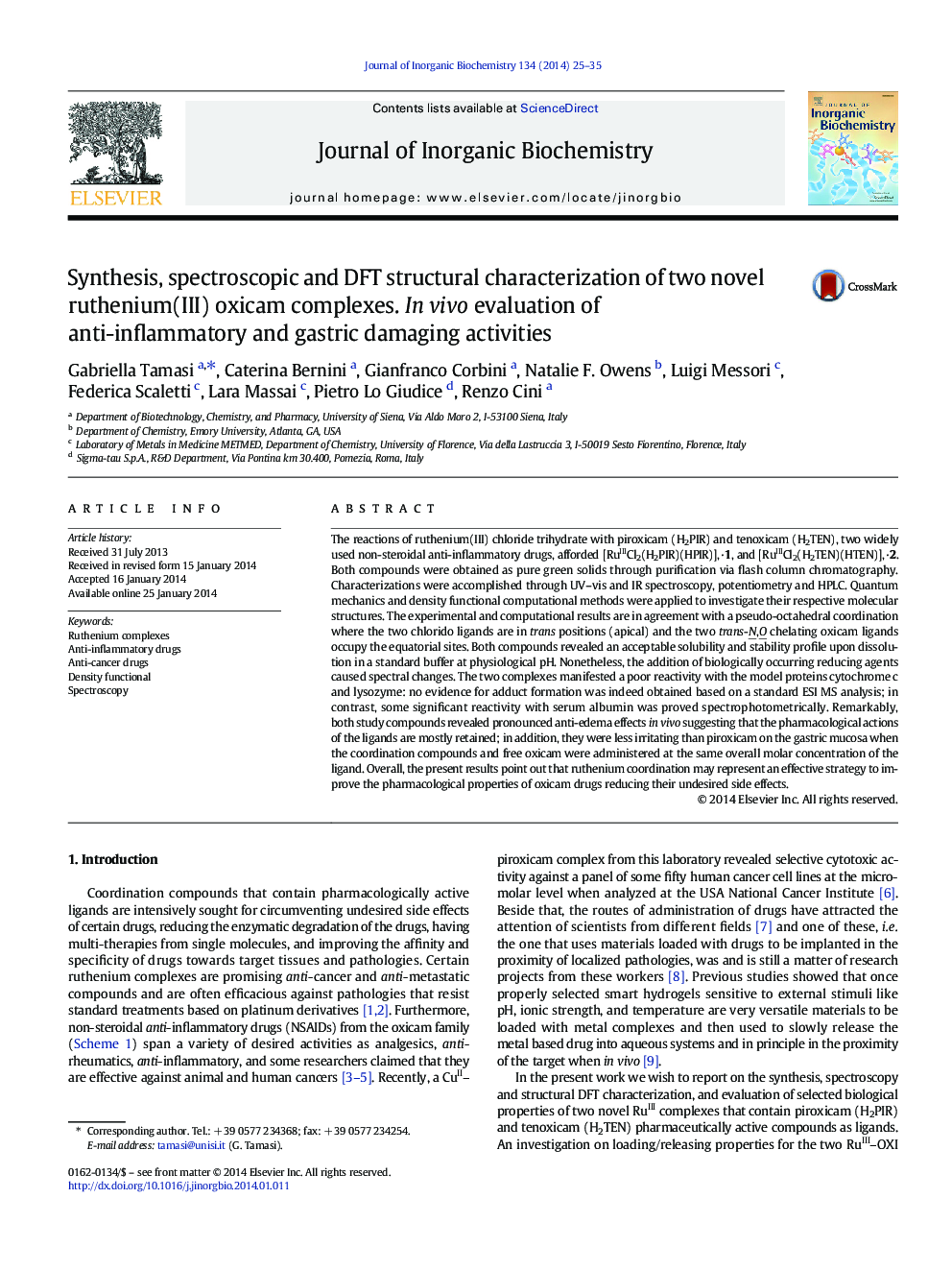| Article ID | Journal | Published Year | Pages | File Type |
|---|---|---|---|---|
| 1315929 | Journal of Inorganic Biochemistry | 2014 | 11 Pages |
•Novel ruthenium–piroxicam/–tenoxicam compounds as anti-inflammatory/-cancer drugs•Synthesis, spectroscopy, and in vivo anti-inflammatory activity for ruthenium drugs•Density functional structures for ruthenium(III)–oxicam drugs
The reactions of ruthenium(III) chloride trihydrate with piroxicam (H2PIR) and tenoxicam (H2TEN), two widely used non-steroidal anti-inflammatory drugs, afforded [RuIIICl2(H2PIR)(HPIR)],·1, and [RuIIICl2(H2TEN)(HTEN)],·2. Both compounds were obtained as pure green solids through purification via flash column chromatography. Characterizations were accomplished through UV–vis and IR spectroscopy, potentiometry and HPLC. Quantum mechanics and density functional computational methods were applied to investigate their respective molecular structures. The experimental and computational results are in agreement with a pseudo-octahedral coordination where the two chlorido ligands are in trans positions (apical) and the two trans-N,O chelating oxicam ligands occupy the equatorial sites. Both compounds revealed an acceptable solubility and stability profile upon dissolution in a standard buffer at physiological pH. Nonetheless, the addition of biologically occurring reducing agents caused spectral changes. The two complexes manifested a poor reactivity with the model proteins cytochrome c and lysozyme: no evidence for adduct formation was indeed obtained based on a standard ESI MS analysis; in contrast, some significant reactivity with serum albumin was proved spectrophotometrically. Remarkably, both study compounds revealed pronounced anti-edema effects in vivo suggesting that the pharmacological actions of the ligands are mostly retained; in addition, they were less irritating than piroxicam on the gastric mucosa when the coordination compounds and free oxicam were administered at the same overall molar concentration of the ligand. Overall, the present results point out that ruthenium coordination may represent an effective strategy to improve the pharmacological properties of oxicam drugs reducing their undesired side effects.
Graphical abstractTwo original ruthenium(III)–oxicam complexes showed in vivo higher anti-edema and lower undesired effects when compared to free ligands.Figure optionsDownload full-size imageDownload as PowerPoint slide
